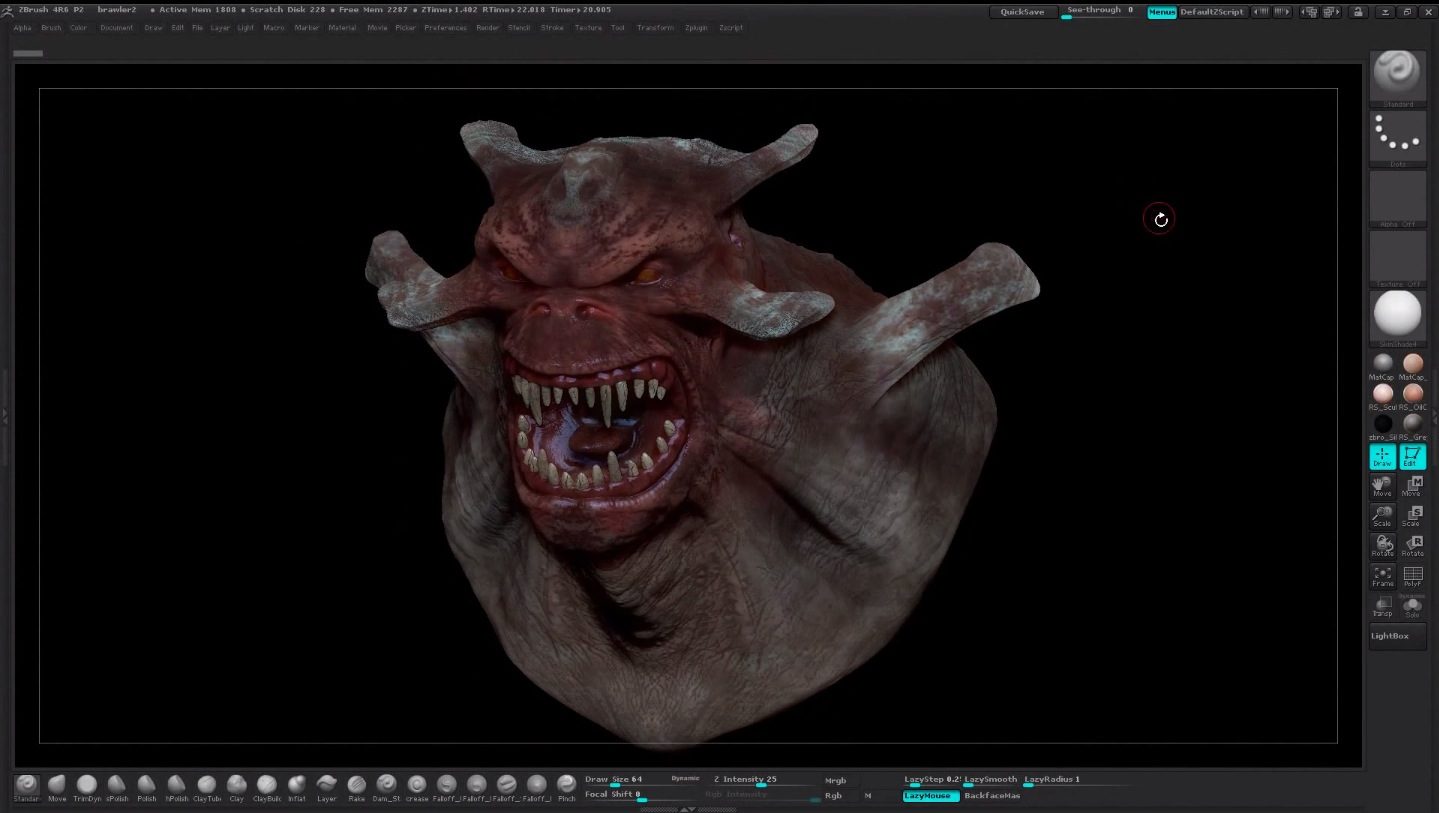
We also look at the new text tool inside ZBrush.Leonardo Branco is 2D and 3D artist with 18 years of experience producing art content for games. We will look at the new Lazymouse 2.0 and practical examples. If it’s the only object in the scene and don’t mind it being centered and rescaled, go to tool>deformation>unify.We will look at the live boolian features. How do I turn on lazy mouse in ZBrush Why is symmetry not working in ZBrush If your object isn’t centered in the scene (and you would like it to be) go to tool>geometry>position and zero out the values.
A normal, a diffuse and a specular map, because we were using a very customized Unity 3D’s Shader, back then.Walfrido Monteiro, the concept artist by the occasion, came up with this great design! To see more of this great brazilian artist, check out his personal site.Once a concept is approved, I start to work on the high polygon model, or the “reference” model. Our objective was to create an extremely detailed object, that had to stay below 1.000 polygons and had to make use of only 1 material and 3 texture maps. “Shield Libitina” was an asset produced for the game “Blood & Glory”, from Glu Mobile, in 2011 and was conceived to be the most expensive of it’s category in the game. Modified: Lazy Mouse now OFF by default for normal Selection and Masking.First, a little background. In this tutorial I’ll try to cover in a very elementary and practical way all the steps I took to produce this asset.Pixologic ZBrush sets the industry standard for digital sculpting/painting.
Now it’s ready for the painting job.I did all the painting inside ZBrush and started with a very dark primer to act as base. It was easier and faster, for me, to draw the ornaments and its relations, instead of drawing the masks.To finish with the sculpture, I modeled the handle, some minor details and put the buttons on the cushion at the backside of the shield. I chose this method instead of using masks and inflate them, because of the intrinsic relation of the ornaments. It’s the most time consuming stage of the project and also the most pleasant for me: the sculpting of all the ornaments.After making about 4 to 5 subdivisions, I found that the best way to sculpt the ornaments, was to make continuous and decisive brush strokes, using the “lazy mouse” feature (setting from 30 to 50) and the clay brush. The goal here is just to find the volumes and proportions of the piece, so we have to resist the temptation to start creating details at this point, to avoid losing time.When the volumes and proportions are defined, the real fun begins. In ZBrush, I start “extracting” the silhouettes of the pieces from a 3D plane, using a mask made from the very concept.I did this for the “Base” and the “Frame” of the shield.After that, I start to model the general shapes and volumes of the pieces in a very rough way.


To use the PBR (Physically-based rendering) approach, the textures’ arrangement need to be much more elaborated. Notice that these process was the default for traditional shader system back then. Tweaking the diffuse map I made the color specular map (with an alpha channel controlling the glossiness and intensity).


 0 kommentar(er)
0 kommentar(er)
